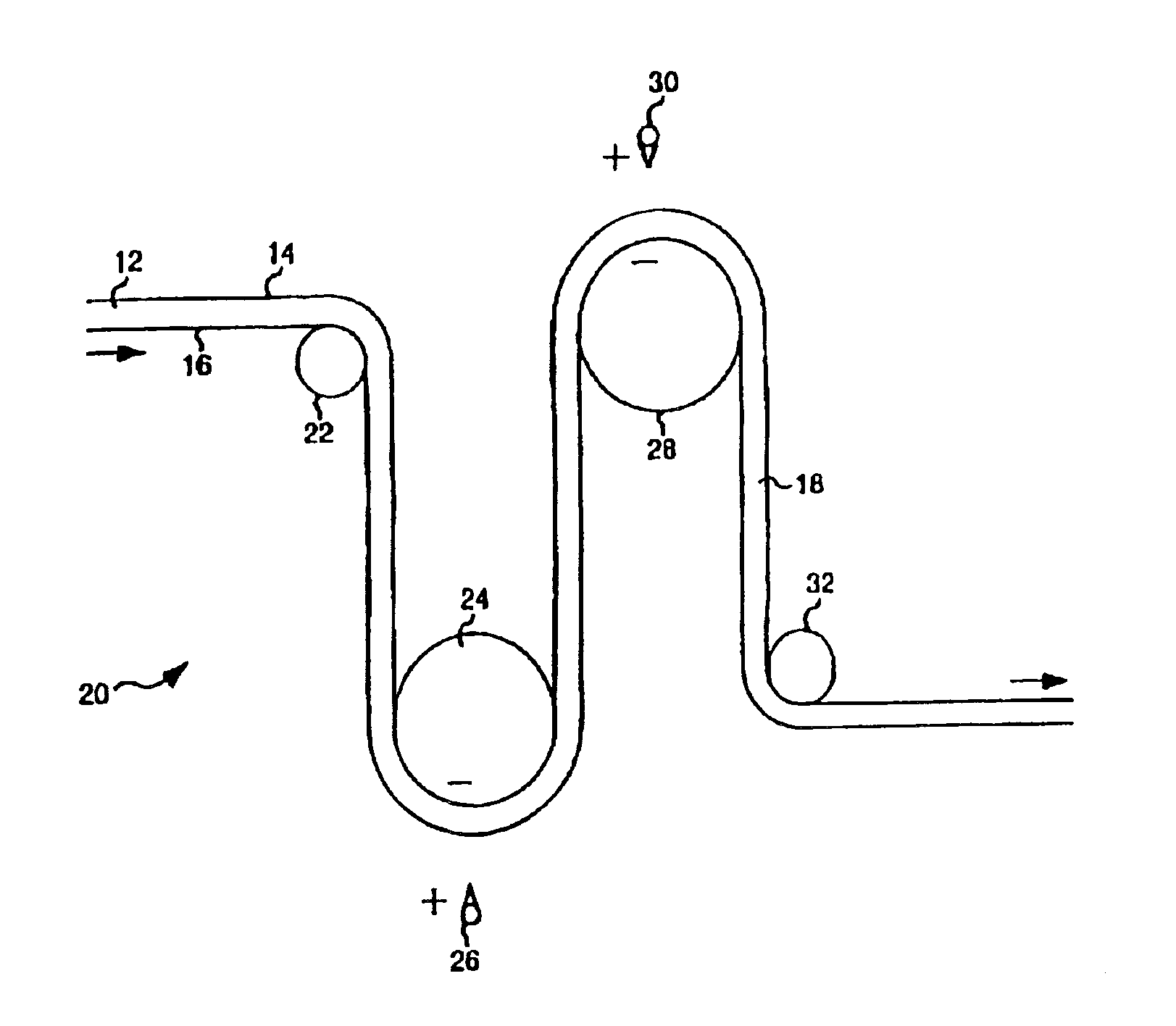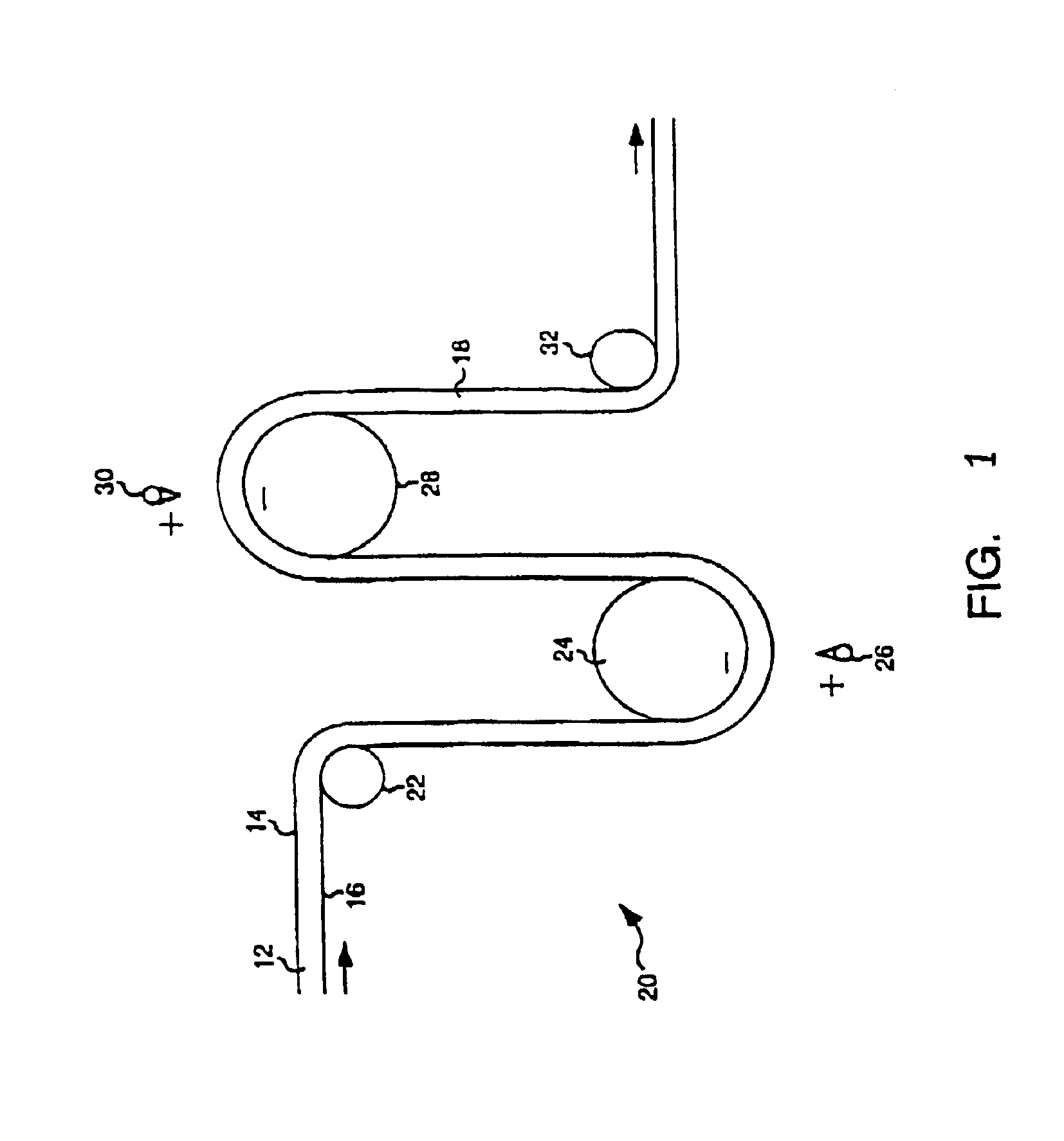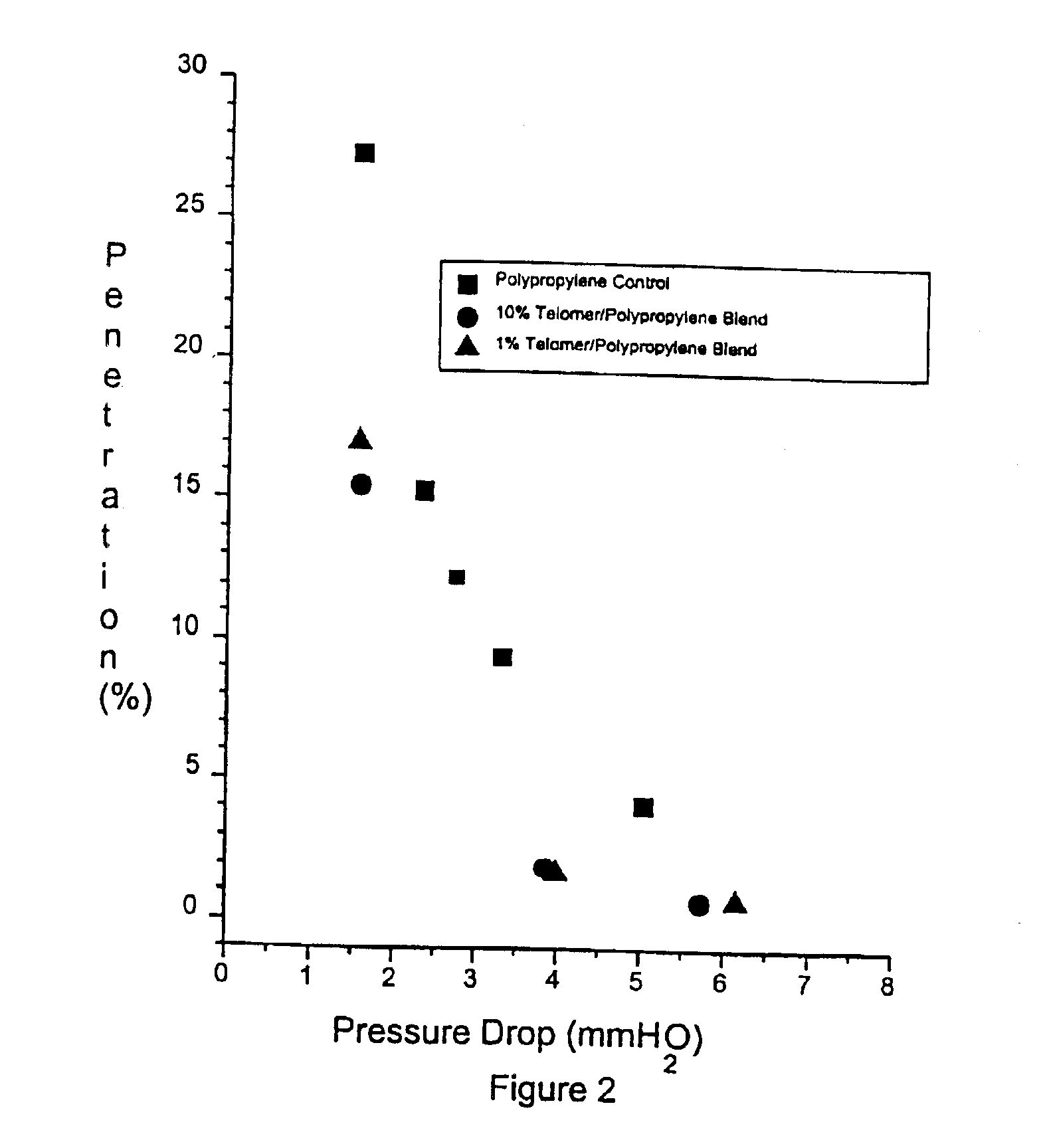Stable electret polymeric articles
a polymer and stable technology, applied in the field of polymeric electret filtration materials, can solve the problems of inability to impart an electrostatic charge or field of sufficient initial strength and/or maintain a desired level of electrostatic charge over time, and many thermoplastic polymer materials often experience a significant or accelerated degradation in the level of electrostatic charge, so as to achieve the effect of enhancing the filtration efficiency of porous materials of the present invention
- Summary
- Abstract
- Description
- Claims
- Application Information
AI Technical Summary
Benefits of technology
Problems solved by technology
Method used
Image
Examples
example 1
[0037]Example 1A (comparative): the meltblown fibers consisted of 100% by weight polypropylene (PROFAX PF-015 available from Montel Polymers of Wilmington, Del.);[0038]Example 1B (comparative): the meltblown fibers consisted of a microcomposite of 99% by weight polypropylene (PROFAX PF-015 available from Montel Polymers of Wilmington, Del.) and 1% by weight BaTiO3 (TICON 5016 Barium Titanate available from TAM Ceramics of Niagara Falls, N.Y.);[0039]Example 1C: the meltblown fibers consisted of a microcomposite of 98% by weight polypropylene (PROFAX PF-015 available from Montel Polymers of Wilmington, Del.), 1% by weight maleic anhydride telomer (EXXELOR PO 1015 available from Exxon Chemical Company of Houston, Tex.) and 1% by weight BaTiO3 (TICON 5016 Barium Titanate available from TAM Ceramics of Niagara Falls, N.Y.);[0040]Example 1D: the meltblown fibers consisted of a microcomposite of 98% by weight polypropylene (PROFAX PF-015 available from Montel Polymers of Wilmington, Del.),...
example 2
[0047]Example 2A: the meltblown fibers consisted of a microcomposite of 99% by weight polypropylene (Fina EOD97-18 available from Fina Oil and Chemical Company of Deer Park, Tex.) and 1% by weight BaTiO3 (TICON 5016 Barium Titanate available from TAM Ceramics of Niagara Falls, N.Y.);[0048]Example 2B: the meltblown fibers consisted of a microcomposite of 98% by weight polypropylene (Fina EOD97-18 available from Fina Oil and Chemical Company of Deer Park, Tex.), 1% by weight maleic anhydride telomer (EXXELOR PO 1015 available from Exxon Chemical Company of Houston, Tex.) and 1% by weight BaTiO3 (TICON 5016 Barium Titanate available from TAM Ceramics of Niagara Falls, N.Y.).
[0049]As evidenced by the data set forth in Tables 2A and 2B below, the microcomposite / telomer combination yields filter media with higher initial filtration efficiency and better resistance to efficiency loss due to aging effects. Microcomposite media of polypropylene / barium titanate experienced a 9% change in filt...
example 3
[0052]Example 3A: the meltblown fibers consisted of a microcomposite of 91.3% by weight polypropylene (PROFAX PF-015 available from Montel Polymers of Wilmington, Del.), 5% by weight maleic anhydride telomer (EXXELOR PO 1015 available from Exxon Chemical Company of Houston, Tex.) and 3.7% by weight BaTiO3 (TICON 5016 Barium Titanate available from TAM Ceramics of Niagara Falls, N.Y.);[0053]Example 3B: the meltblown fibers consisted of a microcomposite of 91.3% by weight polypropylene (PROFAX PF-105 available from Montel Polymers of Wilmington, Del.), 5% by weight maleic anhydride telomer (POLYBOND 3200 available from Uniroyal Chemical Company, Middlebury, Conn.) and 3.7% by weight BaTiO3 (TICON 5016 Barium Titanate available from TAM Ceramics of Niagara Falls, N.Y.).
[0054]The air filtration efficiencies for the meltblown nonwoven webs prepared from examples 3A and 3B shown are set forth in Tables 3A and 3B. Filtration media were evaluated at the time of manufacture and then again ap...
PUM
| Property | Measurement | Unit |
|---|---|---|
| size | aaaaa | aaaaa |
| weight percent | aaaaa | aaaaa |
| weight percent | aaaaa | aaaaa |
Abstract
Description
Claims
Application Information
 Login to View More
Login to View More - R&D
- Intellectual Property
- Life Sciences
- Materials
- Tech Scout
- Unparalleled Data Quality
- Higher Quality Content
- 60% Fewer Hallucinations
Browse by: Latest US Patents, China's latest patents, Technical Efficacy Thesaurus, Application Domain, Technology Topic, Popular Technical Reports.
© 2025 PatSnap. All rights reserved.Legal|Privacy policy|Modern Slavery Act Transparency Statement|Sitemap|About US| Contact US: help@patsnap.com



